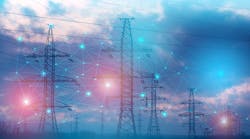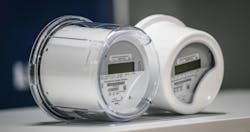Last year was a tumultuous one for the grid with no sign of changing in 2021. Driven by COVID-19, utilities are facing unprecedented financial and operational challenges caused by a global pandemic, which placed essential office and field personnel in a dangerous situation while drastically shifting electric demand from the commercial to the residential sector.
Then add a dangerous wildfire season in the West that lasted into November in Colorado and burned more than four million acres in California and a stormy summer across the Midwest, and there is no question that grid operators had their work cut out for them. The North American Electric Reliability Corp. (NERC) already warned last June that the amount of maintenance deferred because of COVID-19 concerns was becoming dangerous.
Challenges like these — both short-term ones like natural disasters and ongoing crises like the COVID-19 pandemic — are driving changes in utilities as they look for new ways to manage their grids with fewer human resources and faster response times.
This unique situation has utilities considering three basic themes.
First is visualization. Do they know what is happening across their grid and on the grid-edge in real time? Can they see problems early, ideally before they even happen or get out of control?
Second is responsiveness. Are they able to respond to issues quickly and effectively while minimizing the risk to their own staff? What if a portion of their staff is out or working remotely? Longstanding workarounds like mutual aid agreements may be strained by staffing shortages and contagion worries.
Third, and arguably the most important, is adaptability. Can they keep functioning efficiently and effectively if demand and supply patterns change quickly? Is the grid positioned to pivot and take advantage of longer-term opportunities and challenges like the rise of distributed energy resources (DERs)?
A digitized grid offers one key solution to all these issues. And, as more utilities take advantage of new technologies for monitoring, analyzing, and responding to incidents in real time, the results are being noticed. The International Energy Agency cites the potential to "unlock system-wide benefits including reduced outages, shorter response times, deferral of investments to the grids themselves, and DER integration" through smart grid technology.
Grid equipment is inherently at some risk of mechanical failure, especially when utility networks can include hundreds of thousands of miles of wires. But enabling companies to spot, analyze, and respond to those problems rapidly is critical and unlike many proposed solutions such as undergrounding power lines, digitizing high-risk parts of the grid can be implemented relatively inexpensively and quickly.
Sophisticated systems of compact sensors and advanced meters spread across the entire network can be an inexpensive way to substantially increase the visibility of the grid system, helping to reduce the risks of major fires and outages by letting companies respond more rapidly to equipment faults and small blazes before they get out of control. Similar systems are already being implemented successfully across much of the United States to help increase resiliency against extreme weather.
The U.S. Department of Energy's (DOE's) Advanced Grid Research division put the problem succinctly: "In today's connected world, customers can't imagine that a utility would have to wait for a customer call to know that their power is out."
An intelligent grid is also a self-healing grid that can support switching and load transfers without overloading assets. In the event that re-routing is long term, sensors can alert utilities before overloading occurs because of changes in weather patterns. Increased automation can even help utilities improve their outage response times. When meters report lost service and that information is instantly paired with line sensor and SCADA data, the ability to implement fault location, isolation, and service restoration (FLISR) capabilities has had a proven impact on service interruption.
Analytics also enable real-time responsiveness by allowing utilities to shift from time-based maintenance — where utilities inspect or replace assets on a set schedule — to condition-based maintenance, where conditions such as voltage deviations or loading prompt field crew action. This lets companies get work done with fewer boots on the ground, minimizing the number of employees in physical contact with each other — a crucial concern during the age of COVID-19.
In studies conducted by McKinsey & Co., five-year maintenance costs could be reduced with condition-based maintenance versus traditional time-based schedules. Savings in one McKinsey analysis reached 17%, while a second study showed a 36% drop in costs, depending on the devices, analytics systems, and maintenance strategy used. These technologies can also detect hard-to-catch issues along thousands of miles of lines that visual inspections often miss.
Adaptability also means making sure the grid is ready to meet changing needs. That can mean planning for and responding to the atypical load shifts of the COVID-19 pandemic that drastically increase residential energy use during the day, according to data reported by Sense.
Just as important, adaptable grids can effectively and efficiently make use of DERs like rooftop solar. Both require a grid capable of sensing and responding to changes to supply and demand on a real-time basis. Using automated smart inverters across their networks, utilities can more easily integrate rooftop solar and operate two-way power flows more efficiently.
The current challenges are complex and unprecedented. Utilities must have the tools they need to anticipate, act quickly, and adapt to ever-changing conditions, whatever they might be. Intelligent grid-edge technology can help utilities do exactly that.


